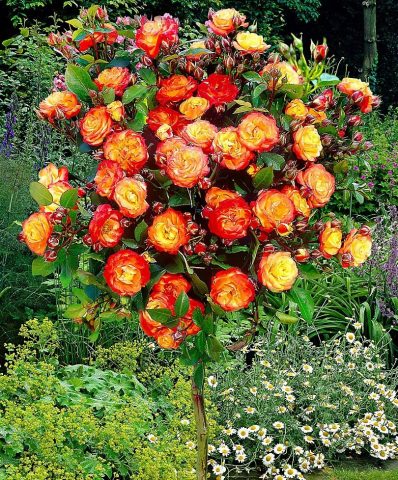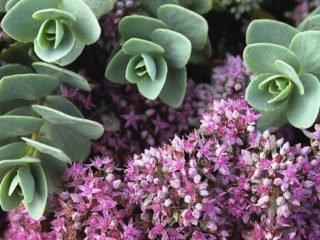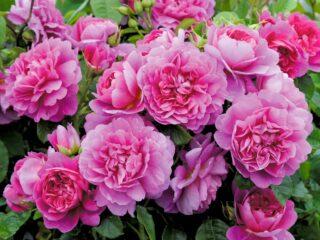Content
Orange roses are popular not only with gardeners, but also with professional landscape designers. Varieties with bright buds will complement any flower arrangement in a personal plot, in an urban area or garden. Almost every group of roses has varieties with orange coloring.
The best varieties of orange roses with names and photos
The first orange roses appeared in France at the beginning of the 20th century. They were obtained by cross-pollination of red, yellow, white varieties. The brightness and saturation of the color depended on the derivative base. In each group of roses you can find varieties with pink, yellow, and red tints; those with bright orange flowers are very popular. The care requirements for hybrids with unusual bud colors are the same as for all representatives of the group to which they belong.

All orange roses are the result of selection work
Independent propagation is possible only by vegetative means; the seeds do not retain their characteristics.
Varieties of orange climbing roses
This group includes tall roses with long branching stems up to 3.5 m.Flower shape, size, and color shades depend on the variety. All representatives have abundant flowering, strong immunity and standard care conditions.
Several varieties of orange-yellow roses with names and brief characteristics:
- Alchemist. The length of the stems is up to 3 m, the bush is compact, dense, with a diameter of 1.8-2 m. The flowers are large, cup-shaped, 12 cm wide, double type. Flowering is single, but long-lasting - from May to August.
- Buff Beauty. A variety with repeated flowering, lasting until October. The stems are drooping, 2 m long, the flowers are dark orange up to 7 cm in diameter, densely double, single or collected in inflorescences. Roses are used in design and for cutting.
- Impressionist. Up to 3.5 m in height, the crown is dense, branched, its width is 2.5 m. The flowers are large - 12 cm, double, mostly solitary. Flowering in two waves.
- Lady Penelope. Rose of English selection, pink-orange variety, with double flowers measuring 5 cm, collected in lush inflorescences. The aroma is subtle, fruity. Height – 3 m, width – 1.5 m. Flowering from May to October, buds form throughout the season on last year’s and young shoots.
All varieties presented above are adapted to the Russian climate.

Climbing varieties are used in ornamental gardening for vertical gardening of the walls of gazebos and residential buildings, and to create arched structures
Floribunda
The most common classification, created by hybridizing wild and tea roses. A group with long flowering and stable immunity. Orange representatives have different bush sizes. Plants with thick stems, at the tops of which inflorescences form. Flowers can be double or semi-double, goblet-shaped, spherical, cup-shaped.
Below are several yellow-orange varieties of roses, with possible red or pink tints:
Variety name | Height, cm | Width, cm | Flower diameter, cm | Form |
Apricola | 75 | 60 | 5-6 | Goblet, terry |
Atlantic Star | 90 | 80 | 8 | Cup-shaped, medium terry |
Bengali | 110 | 60 | 6-7 | Cupped, semi-double |
Bentheimer Gold | 70 | 50 | 7-9 | Cup-shaped, medium terry |
Briosa | 80 | 65 | 8 | Globular, densely double |
Vavoom | 75-100 | 55-70 | 10 | Cup-shaped, densely double |
Queen of Hearts | 70 | 40-50 | 10-12 | saucer-shaped, terry |
Lady Marmalade | 85-90 | 65-70 | 8-10 | Deep cupped, semi-double |
All varieties are characterized by continuous flowering from early June to late September.

Orange floribunda is used in landscape design, used for forcing, grown for cutting
Hybrid tea orange roses
The classification includes selection varieties created on the basis of remontant and tea roses. The distinctive features of the group include the highest quality of the flower and a long flowering period. These are mainly varieties of roses with red-orange flower colors.
Popular varieties:
- Alexander. Plant height – 1.5-2 m, diameter – 1.2 m. The flowers are bright, semi-double, 12 cm in size.
- Alinka. It grows up to 70 cm, the bush is compact, densely leafy, with medium thorniness. The flowers are goblet-shaped, orange without shades. Width – 12 cm.
- Goldstein Perla. The brightest representative of the orange group with goblet-shaped flowers with 40-45 petals. It grows up to 1.8 m, forming a dense, spreading crown 1.5 m wide. There are few thorns, the aroma is weak.
- Konika. Plant height – 70-90 cm, width – 40 cm. The flowers are large, cone-shaped, densely double, two-colored, the lower part of the petals is yellow, the upper part is dark orange.
- Dark Wow. Flowers with a pronounced cone-shaped core. The petals are orange with a reddish tint. The aroma is weak.Thorns are formed in large numbers. The rose grows up to 1 m, with a crown diameter of 45 cm.

All orange representatives of the hybrid tea group are re-flowering
Park
This classification includes tall roses up to 2.5 m, forming powerful bushes. They bloom profusely earlier than all representatives of the species, the period lasts about a month. They remain decorative until frost due to their numerous bright fruits and dense foliage. In Russia, only two orange varieties are grown: Consuela, with a pink tint of petals, and Valencia, with a bright, uniform color.

Park representatives are frost-resistant; winter shelter is not required
Standard roses
There are no standard varieties in nature; the “pink tree” is obtained through special pruning and budding. It is better to use garden rose hips as a rootstock; the bush is formed into one trunk and at a height of 1-1.5 m the buds of one or several orange varieties are grafted; it is better to take hybrid tea or floribunda. You can purchase an already formed plant; in nurseries, the Heinsohn’s Record species is used as a rootstock for standard yellow-red roses.

Floribunda Rumba looks beautiful on a trunk
Ground cover
Representatives of the group are short. Their height is 45-70 cm. Ground cover varieties have long twisting stems that can reach 1.5 m. They are used for vertical gardening and as a ground cover option. Two varieties are grown in the Russian climate. Amber Carpet with semi-double, spherical flowers, up to 10 cm in diameter.The Jazz variety is profusely flowering, semi-double, orange, with a copper tint.

In the third year of growth, ground cover roses form dense clumps
Dutch
All orange roses from the Netherlands are represented mainly by the double floribunda and hybrid tea groups. The flowers are spherical and goblet-shaped. Dutch roses are used in floristry and ornamental gardening.
Popular orange varieties:
Name | Height, cm | Width, cm | Flower diameter, cm |
Alegria | 60 | 40 | 4-6 |
Babe | 60 | 50 | 5 |
Bessie | 40 | 70 | 4 |
Wow | 70-100 | 70 | 10-13 |
Vuvuzela (peony-shaped) | 80 | 50 | 9-10 |
Elite | 90 | 60 | 10-12 |
Ibiza | 60 | 50 | 8-10 |
All hybrid forms are characterized by repeated flowering

Dutch variety Roslyn Ecuador
Spray orange roses
This group is represented by roses with a dense and sparse crown, tall or low-growing bushes. Flowers on one plant can be small or large (up to 20 cm), ancient-shaped, goblet-shaped, cup-shaped or classic with a cone in the center.
Popular orange varieties:
- Arabia;
- Gazebo;
- Versaini;
- Westerland;
- Jeff L Artist;
- Kahala;
- La Villa Cotta.
Flowering is long-lasting and repeated.

The boundaries of this classification are blurred, bush roses are located between park scrubs and semi-climbing varieties
English
The classification appeared relatively recently; David Austin is considered its founder. These are mainly tall varieties, several of them were included in the “Nostalgie” series. Their flowers are shaped like ancient peony roses. The basis was taken from Damask, hybrid tea, French, and Floribunda varieties.
Popular orange awnings:
- Lady of Shalott. The bush is branched with stems up to 2 m long; single buds and inflorescences are formed at the top of perennial and young shoots. Orange flowers with a peach tint measuring 7-9 cm.
- Golden Celebration. A climbing variety up to 2.5 m high. The flowers are large up to 16 cm, the petals are rich orange with pink splashes.
- Molineux. A densely double rose with yellow-orange flowers. A bush with erect stems without thorns grows up to 1.5 m.

All English varieties with a persistent, pronounced aroma
Large (grandiflora)
The Floribunda group series includes roses with large (16-20 cm) flowers. Orange varieties are double, the buds form loose inflorescences on the tops of erect shoots. The bushes are densely thorny, intensely leafy, 1.5-2 m high.
Orange varieties are represented by the following roses:
- Geisha;
- Gazebo;
- Bermuda;
- Pulse;
- Eastern Express.
Blooms abundantly from early summer to mid-autumn

Orange Grandiflora Geisha
Miniature
Miniature varieties are used to create borders, included in mixborders, frame flower beds, and decorate rockeries. Dwarf (spray) roses are an ideal option for hanging. The varieties are low-growing (up to 40 cm), compact, crown diameter is no more than 30 cm, flowers are 3-5 cm, single or in inflorescences.
Popular border varieties of orange roses:
- Clementine;
- Summer;
- Macarena;
- Orange baby;
- Rise Shine;
- Zorenka;
- Hit;
- Sant City;
- Jezebel;
- Sphinx.
All miniature representatives are characterized by continuous flowering, except for Clementine. Her buds bloom from June to August. The varieties are frost-resistant, universal in use, with good immunity to fungal and viral infections.

Miniature Rose Orange Jewel
Features of cultivation
All orange varieties grow well in aerated, light, fertile, sandy-clay soil so that the root system always has enough moisture and air. They do not tolerate damp, heavy clay soil. They will also not grow in waterlogged, acidic or sandy soil.
Orange roses are light-loving, but it is bad when they are in the sun all day. They quickly fade, the color of the petals turns pale, and burns appear on the leaves. Therefore, you need to set aside a place so that during the midday heat the roses are in partial shade.
On the northern slopes or under a dense canopy of trees, the growing season slows down, growth decreases, flowers become smaller, and a weak plant often gets sick. The best option is a site protected from the north wind and facing south.
Conditions for caring for orange roses:
- Constant loosening of the root circle to a depth of 10-15 cm to increase aeration and destroy weeds. Do not allow compaction on the soil surface.
- Water with a large volume of water at the beginning of the season and after the first wave of flowering. The rest of the time, maintain optimal soil moisture.
- It is recommended to mulch the bush with humus or compost; it will provide additional nutrition and prevent overheating of the root.
- Formative pruning is carried out after planting, if necessary in the spring. Sanitary – in the fall before wintering and at the beginning of the season. At this time, frozen areas are removed.
- For winter in cold climates, the bush is completely covered; in warm regions, it is enough to increase the layer of mulch.
The main condition for growing is the application of fertilizing:
- nitrogen (urea, sodium humate) - applied in May and at the end of July;
- phosphorus (superphosphate) – June-September;
- potassium sulfate - during budding and late autumn;
- calcium is necessary to normalize soil acidity (dolomite flour, ash, chalk). It is used in autumn and spring;
- throughout the growing season they are fed with microelements (boron, manganese, iron, magnesium).
Organics can be used in unlimited quantities. Ideally, a liquid product is used with each watering.
Conclusion
In terms of cultivation, orange roses do not differ from other representatives of the group to which they belong. In terms of beauty, duration of flowering, and delicate aroma, they rightfully occupy a leading place in the garden among ornamental plants.








